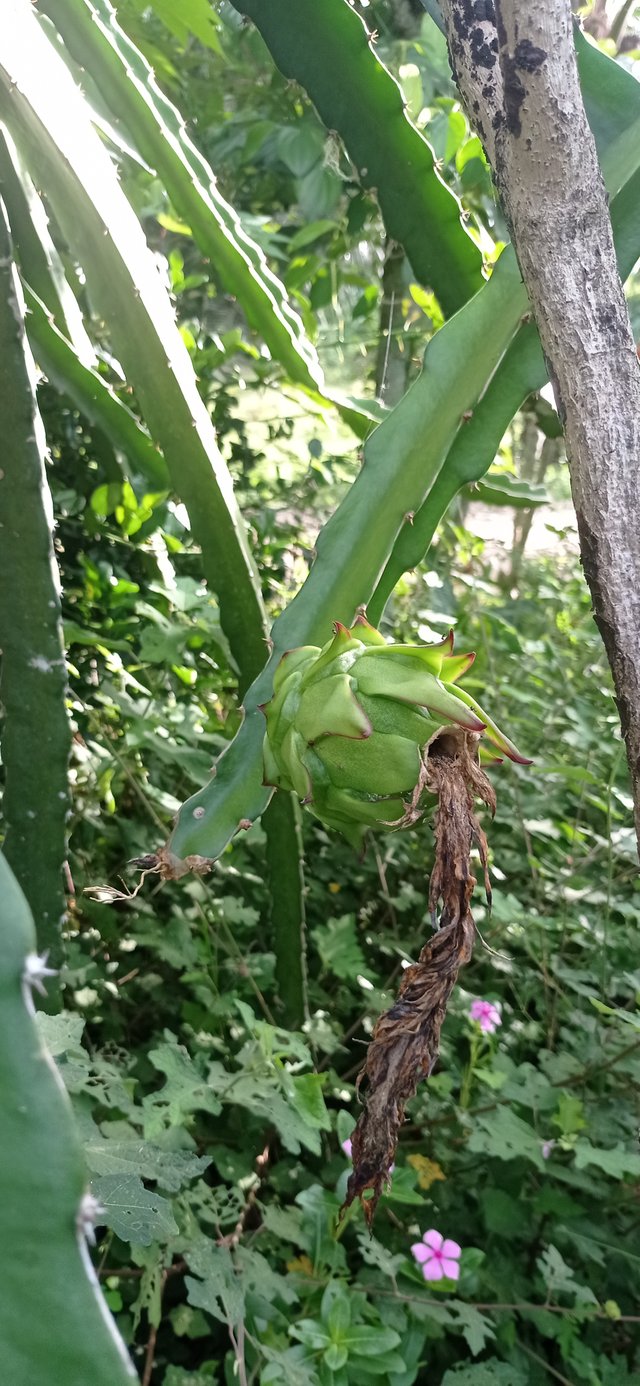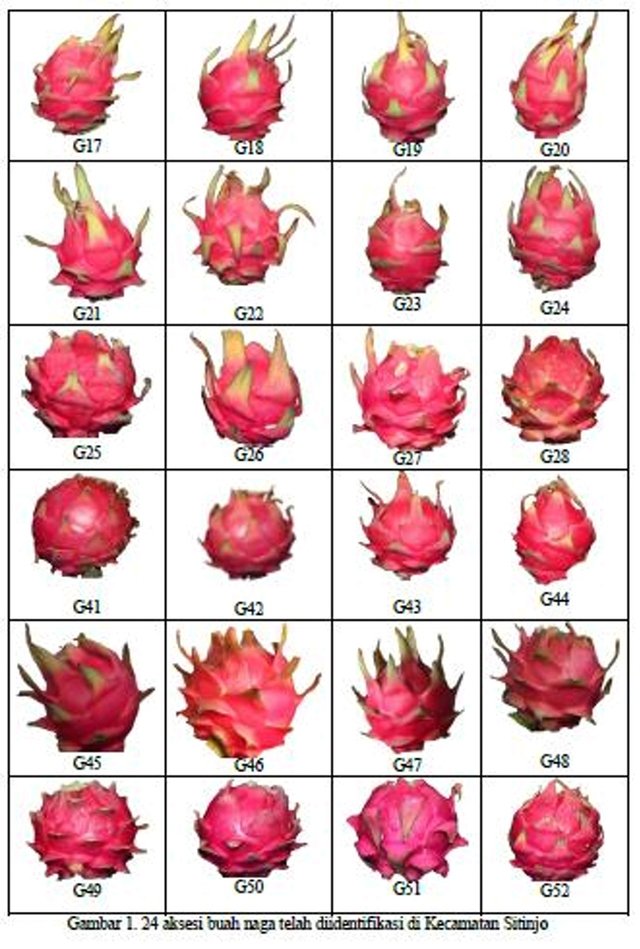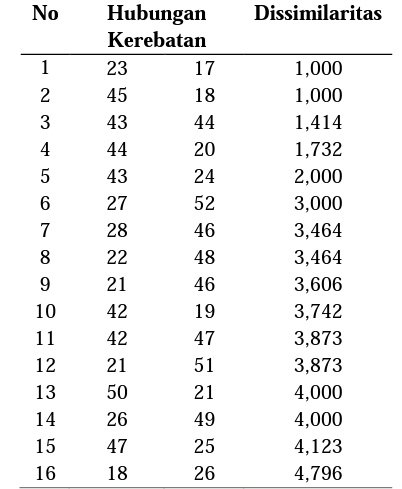Dragon fruit plant (Hylocereus) with the original name known in all regions, namely pitahaya or pitaya (dragon) is a plant in the form of a cactus native to America and began to spread from the coast of Florida to Brazil.
In America, about 14 species of dragon fruit have been found, but the main species of Hylocereus that have been cultivated worldwide are Hylocereus undatus, Hylocereus monacanthus and Hylocereus megalanthus (Hernández and Salazar, 2012).In the mid-19th century, the fruit was introduced by French priests to "Indochina", at that time named for Vietnam, Laos and Cambodia. This plant is well adapted to the climate of the region and local people believe that it is native to their area. Vietnam was the first country to sell dragon fruit into the world of trade under the name dragon pearl fruit or in their language (Thang Loy). But now this plant has been grown and marketed in more than 20 countries as a new horticultural fruit crop (Yosef, 2014).
Dragon fruit plants entered Indonesia around 2000, imported from Thailand, then cultivated into agricultural crops in several areas such as Mojokerto, Yogyakarta, Bogor, and Malang, Jember (Purba, 2012).Dragon fruit is not widely known in Indonesia. This fruit is difficult to obtain in traditional markets and can only be found in certain supermarkets. In addition to the fact that there are still few who plant it, this is also because dragon fruit is still a new type of cultivation plant (Winarsih, 2007). As an introduced and relatively new plant, the diversity of dragon fruit in Indonesia is still relatively low (Santoso, 2013).

Especially in North Sumatra, according to the North Sumatra Agriculture Service (2015) the development of dragon fruit plants in North Sumatra has not been carried out on a large scale and is not the main crop. This condition causes dragon fruit plants to be unknown to the wider community. In Indonesia, dragon fruit types with red skin, white flesh and red skin, red flesh, have been released, with the names Sabila Putih and Sabila Merah (Ivan, 2013).
Until now, knowledge of the morphological and cytological characters of dragon fruit plants is still small and simple. By knowing for sure the morphological and cytological characters of a plant, the genetic information of a plant can be known so that appropriate methods can be sought for its development and cultivation (Setyowati, 2008).
In plant breeding activities, genetic diversity is important. Germplasm as a hereditary substance needs attention, not only to collect and maintain, but also to characterize and evaluate genetic diversity and its phenotype. Information on genetic diversity is important to accurately differentiate intra and interspecies individual genotypes which are indispensable in the development of plant breeding programs (Saputra, 2011). Dragon fruit cultivation in North Sumatra has been carried out in several areas, one of which is Dairi Regency which has been cultivating dragon fruit for the past 3-4 years. One of the sub-districts that has a large number of dragon fruit farmers is Sitinjo District in Dairi District. However, there is no information regarding the type of fruit planted, the variety and the origin of the source of planting material obtained by dragon fruit farmers in the area.

The morphological characters of dragon fruit are based on length, the longest fruit is shown in the genotypes G18 and G51, which is 8.8 cm, while the shortest is G25 and G26 with a size of 4.2 cm. In addition, dragon fruit can also be clearly distinguished between genotypes based on the number and width of the bracts where the widest bractea is in G23 and the narrowest is in G26. The highest number of bractea was obtained by G50 with 49 bractea and the least in G23 with 20 bractea. The morphological characters above are the most dominating characters to see the difference between dragon fruit genotypes.
This is in accordance with Grimaldo's (2001) literature which states that the relevant characters in fruit are weight, flesh weight, length, diameter, skin thickness, percent Brix, number of bracts, width, and length of bractea which significantly differentiate between genotypes. The most interesting character of marketing is the weight of the fruit. Based on the character of fruit weight, significantly the heaviest fruit was at G48 at 680 grams and the smallest was at G26 weighing 85 grams. Looking at the weight of the fruit in Sitinjo District, it is classified as a large fruit when compared to the accessions found in the study of Mejia et al., (2013) who found dragon fruit in Cordoba with the largest size in population 1 weighing 280 grams and in population 2 weighing 287 grams.
The results of the exploration of 24 accessions showed that the position of the bractea to the fruit was the most common to the least, the position in the category of medium stretched in 14 accessions of dragon fruit, upright position attached to 6 accessions and highly stretched position in 4 other accessions. Likewise in the study of Din ha et al., (2014) on 4 fruit clones found, in clones Orejona and F11 the position of the bractea on the fruit was slightly stretched, in clone Chazou 5 and VN White, the position of the bractea was slightly stretched to very stretched.
Table . Hylocereu Dragon Fruit Kinship

Based on the value of inequality or the disgillarity value of the dragon fruit above can be seen that the closest kinship is found in G23 and G17 which has 2 character differences of 7 fruits observed with a value of 1,000 and the farthest value of G18 and G26 which has 5 character differences This is due to the smaller the disarmicity value, the greater the value of the similarity, it is increasingly similar to the objects between objects and vice versa.
This is in accordance with Kurniawan's literature (2002) which states the dissimilarity matrix that contains the coefficient numbers that quantitatively illustrate the relationship between the incipal level among the characters compared. The greater the value of dismal coefficient, the greater the level of dismiates between two characters.
Author:
@muhammadalzikra
Downvoting a post can decrease pending rewards and make it less visible. Common reasons:
Submit
!zen 30
Your post was reviewed and upvoted using the @steemingcuration account
Thank you and continue posting here at Steeming Community.
Downvoting a post can decrease pending rewards and make it less visible. Common reasons:
Submit
the post has been upvoted successfully! Remaining bandwidth: 160%
Downvoting a post can decrease pending rewards and make it less visible. Common reasons:
Submit